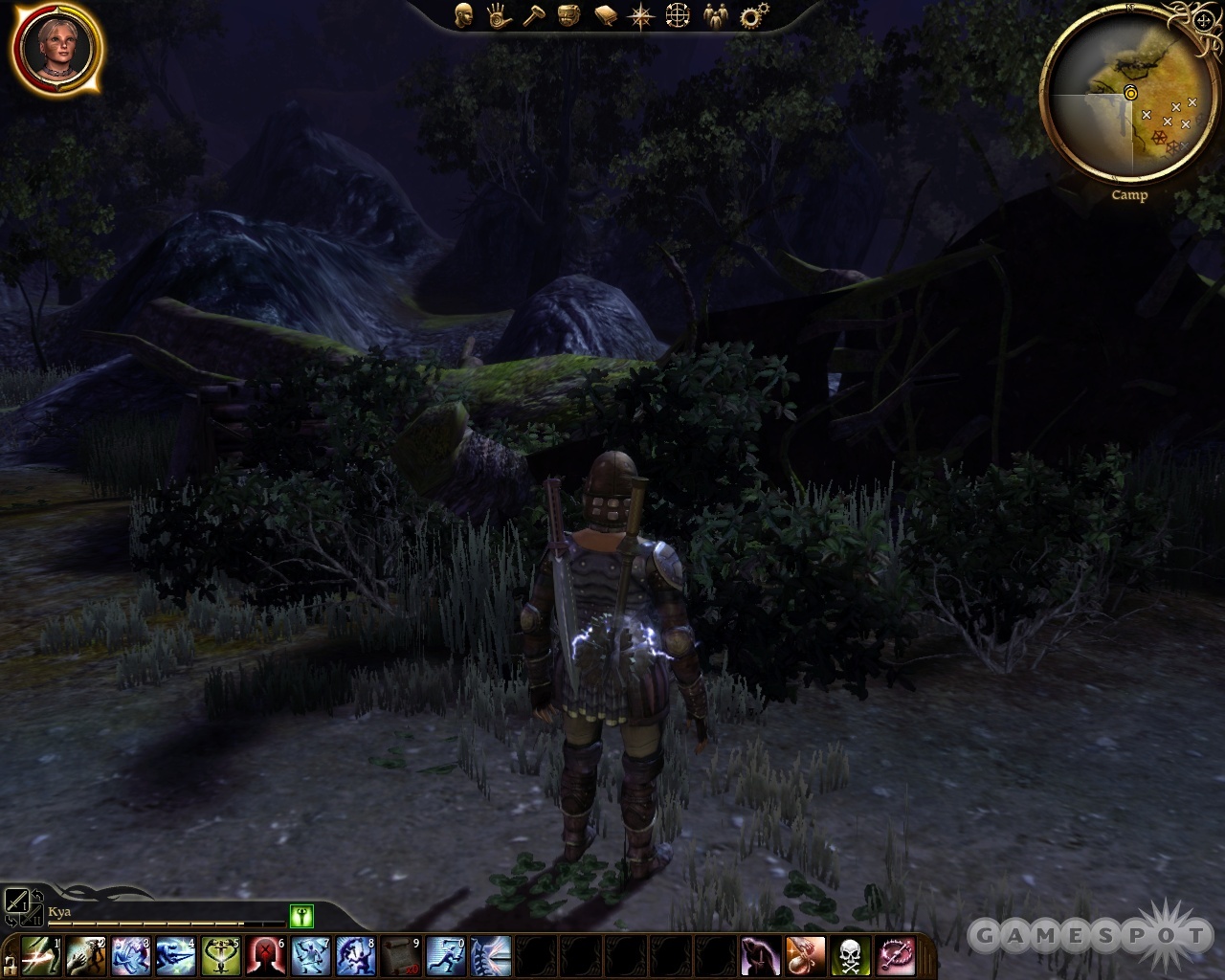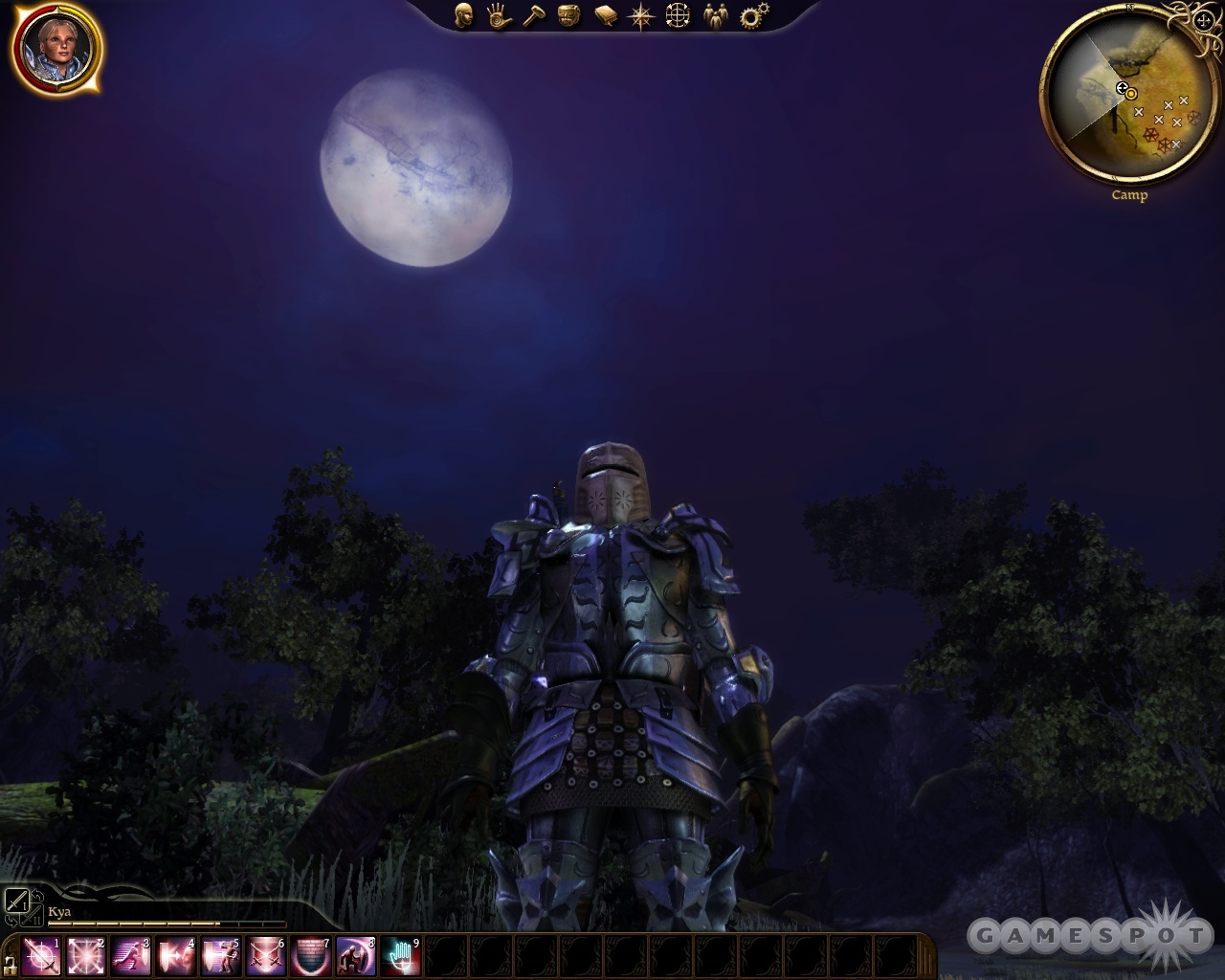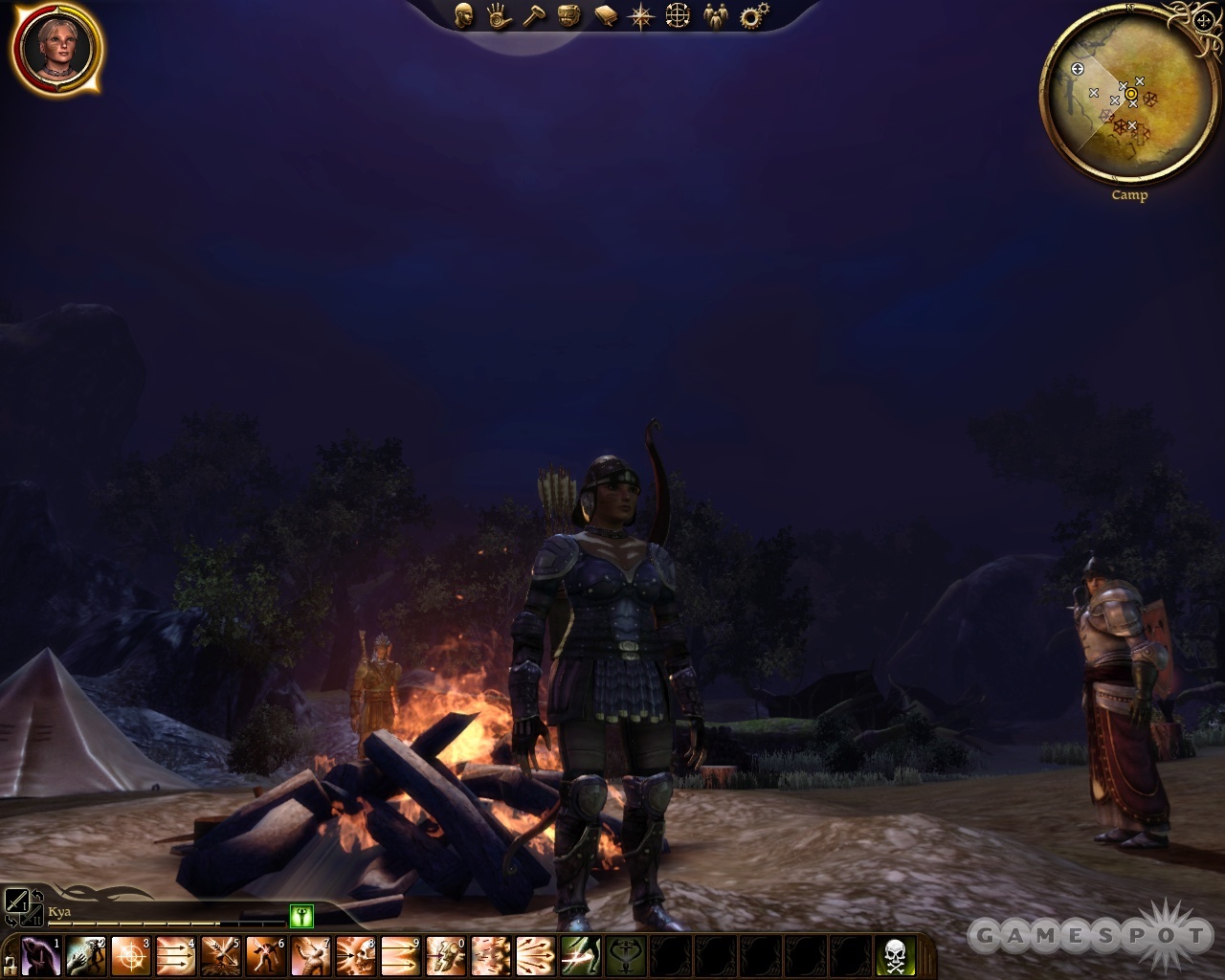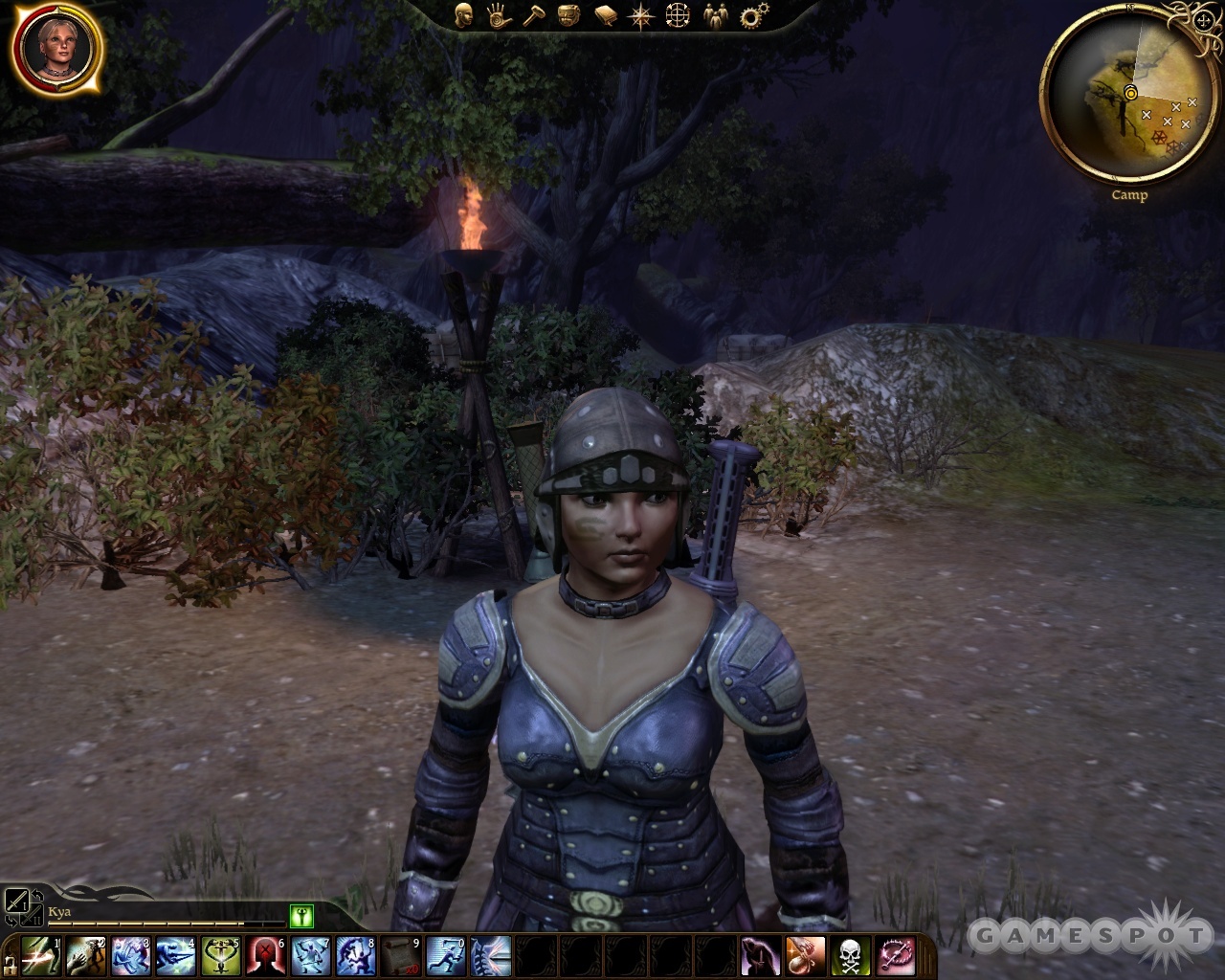Dragon Age Preview - High-Level Combat Skills and Character Development
Find out the best way to slash, burn, stab, and pelt your enemies with arrows in this upcoming role-playing successor to Neverwinter Nights and Baldur's Gate.
Dragon Age: Origins has its roots in the rich, nerdy history of BioWare's classic fantasy role-playing games Neverwinter Nights and Baldur's Gate (and that game's sequel, Baldur's Gate II). Not only will the new game attempt to expand on those games by letting you participate in an epic story of a kingdom at war with an unearthly menace, but it will also let you create a character capable of killing your enemies in a variety of nasty ways. We've had a chance to take the game's open-ended skill and talent trees through their paces and have some details on some of the high-level havoc you can wreak with a specialized combat character.

This time around, we'll focus on the kind of mayhem warriors and rogues can unleash when properly specialized for combat skills. The game's basic skill tree contains universal skills for characters of all classes, such as herbalism (which lets you create potions with plant components) and coercion (which lets you manipulate other characters in conversations with intimidation or fast-talking), but the most important skill tree for our discussion here will be the combat skill tree, which goes up to a level of four and unlocks additional combat talents for each line of combat abilities.
There are a good variety of combat talents in Dragon Age, including talent trees that are exclusive to your character's initial choice of character class (warrior or rogue, in this case), your character's advanced character class (including high-level advanced classes such as the templar warrior and assassin rogue), and a suite of talents specific to combat styles. Interestingly, while talents can be increased over time as you gain experience levels and talent points to invest, combat styles refer only generally to different ways to equip your character--specifically, with a one-handed weapon and shield, or with a bow or crossbow, or with dual weapons, or (exclusively for warriors) with a mighty two-handed weapon.

There's no need to invest in individual weapon proficiency points like in NWN or BG, only to later come to the frustrating realization that your characters spent all their points learning to use battle axes when there was actually an amazing two-handed sword you'd prefer to use for them instead. Now, you can make a much broader choice earlier on, choosing to simply use "a one-handed weapon" with a shield (rather than a longsword or a mace or a warhammer), and so on.
Warriors and rogues each have unique talent trees that are basic to their classes (that is, the warrior talents remain active and can be increased even after a warrior character graduates to an advanced class such as a templar or berserker; the same applies to rogues). BioWare senior producer Ferret Boudoin says, "As far as skills go, any warrior or rogue worth their salt maxes out combat training as quickly as possible. The tier-three and tier-four abilities are just too yummy to pass up." The warrior has two talent trees. The first is a defensive set of talents that increase the warrior's resistances to damage or helps manage the amount of stamina (a meter that powers the use of special abilities) the character uses; the second is an offensive set that includes modes that let the warrior deal critical damage on slower attacks or manage the amount of "aggro" (how focused your enemies are on the warrior) your character generates in combat. Rogues, on the other hand, have four talent trees: two include miscellaneous extra attacks that stun or weaken foes, one is for picking locks and disarming traps, and a fourth tree is for stealth skills.
Rogues and warriors share a few combat-style-related talent trees, including dual weapons and archery (both of which include four talent trees with four unique lines of skills), though only warriors may also use the weapon-and-shield and two-handed-weapon talents. Dual-weapon talents include three individual trees pertaining to more-skillful wielding of two weapons, additional attacks, and sweeping attacks that strike all enemies in range. Archery includes three talent trees that focus on increasing the usefulness of archery in battle (especially at close range, where archery is normally at a disadvantage), precise single shots, and rapidly firing multiple arrows.

Weapon-and-shield style includes three different talent trees that focus on skills that provide shield-bashing melee attacks that stun enemies; a defensive stance that defends against missile attacks; and a melee defense stance that eventually affords the warrior additional protection from flanking and rear attacks. The two-handed talent tree includes three lines of talents for a line of stunning attacks; a debilitating set of attacks that reduces enemies' armor and attack skills; and a set of skills that focuses on huge, powerful swings that deal enormous damage.
Without even getting into the advanced skills that accompany the game's advanced classes, the open-ended talent trees of warriors and rogues already seem to afford a lot of options with respect to how you specialize your character. We tried out a few different midlevel characters with filled-out skill trees to see them in action.
For instance, rogues specialized in dual-weapon fighting style (taking every single talent from this talent tree) have access not only to the basic rogue-based stunning and debilitating talents, but also to additional talents that let them unleash a whirlwind of melee attacks. Rogues with this kind of specialization will have access to the "flurry" talent, which quickly deals three attacks in succession, the "momentum" talent mode, which lets them attack more quickly at a cost of higher stamina, and the "dual weapon sweep" talent, which lets them attack all enemies in an arc. In addition, rogues specialized in this way can also use the "dual striking" talent mode to attack simultaneously with both weapons (which adds the extra attack, but forgoes the ability to backstab an opponent). In our experience, rogues specialized in this way seem best used to dodge and weave in and out of battle to quickly deal heavy amounts of damage to priority targets, then duck out of proximity once their stamina is depleted. BioWare technical designer Cori May says of this specialization, "I do love the swiftness and visceral thrill of the two swords. The other advantage [dual-weapon rogues] have? Poison. And when you run out of stamina for your powers, just try to flank your opponents as much as possible to get to the backstabbing."

Archer-specialized rogues are obviously best used at a distance from anything resembling a close-up fight, and at a distance, they can be devastating adversaries. Such characters can either use the "aim" talent mode to slowly fire well-aimed, damaging shots, or the "rapid shot" mode to pour on the arrows, plus the "scattershot" talent, which fires a single, stunning arrow that splinters into additional arrows that also stun all nearby foes. However, the archery-specialized rogue seems especially dangerous when focused on single targets of opportunity, especially squishy enemy wizards that aren't wearing much armor. Such rogues can use talents like "pinning shot" to temporarily stun enemies; "crippling shot" to reduce their defenses; and the "critical shot" and "arrow of slaying" talents to score a critically damaging hit. According to lead designer Mike Laidlaw, "An archer rogue trades the raw damage of a backstabbing assassin rogue for survivability, range, and pinpoint devastation. No one is better against an enemy mage. No one."
Warriors, on the other hand, may specialize in different talent lines, such as the weapon-and-shield talents, which offer both powerful defensive bonuses that increase the warrior's staying power and shield-based attacks that let you bash your foes senseless. Weapon-and-shield-specialized warriors can often dictate the pace of a battle, remaining on their feet longer than anyone else by using talent modes such as "shield defense," "shield wall," and "shield cover" to boost defense against both melee attacks and missiles and by using a variety of shield-based attacks, such as "shield bash" (which instantly stuns its target) and "shield pummel" (a double shield attack that also stuns its target). BioWare senior artist Andrew Farrell explains: "There are a lot of stuns with the sword and shield warrior that really help when you're outnumbered. [This type of warrior] also has a lot of stuns and knockback [talents]. [These stuns open up foes] to big hitters who can use their skills with no resistance."

For the more offensive-minded warrior, two-handed weapons may be a better choice. This type of warrior struggles with the frustration of having to swing a slow, heavy weapon and wait for a blow to land (which may be interrupted in mid-swing), but gains the satisfaction of dealing huge damage in battle. Warriors specialized in the two-handed weapon talent tree are quite possibly the best at dishing out damage, though they have a handful of supplemental talents that are also quite useful. The two building blocks of the two-handed weapon-focused warrior's repertoire are the "sunder armor" talents, which reduce an enemy's armor, and the "mighty blow" group of talents, which start off with a single, powerful attack that does exceptional damage and eventually unlocks the "powerful swings" talent mode, which deals additional damage but incurs penalties to the warrior's defenses and overall attacks (not unlike the power attack mode of Neverwinter Nights). Two-handed weapon-specialized warriors also have access to miscellaneous abilities like "pommel strike," which knocks an enemy flat on its back, and "indomitable," a talent mode that makes the warrior impervious to knockdown abilities. BioWare technical designer Grant Mackay suggests: "The two-handed warrior is really great for dealing some unstoppable damage. If you want to stand toe-to-toe with a dragon and not worry about getting knocked to the ground or sent flying while dishing out some brutal lessons with a giant sword, this is where you want to go."

Of course, these descriptions are only for rogues and warriors who fully specialize in a single talent tree associated with a specific fighting style. Dragon Age: Origin's strategic options really open up once you begin mixing and matching talents from different trees along with your characters' warrior and/or rogue talents, as well as the unique talents they'll unlock when they unlock their advanced classes. From what we've seen, you can make all kinds of trouble in Dragon Age with a couple of daggers, a good two-handed sword, a bow, or a shield. Come back next time when we explore the kind of pandemonium you can cause when you decide to use magic instead.
Got a news tip or want to contact us directly? Email news@gamespot.com
Join the conversation